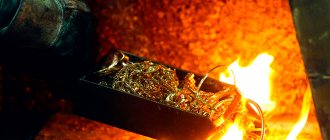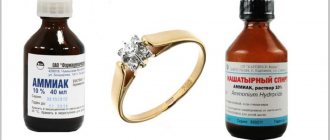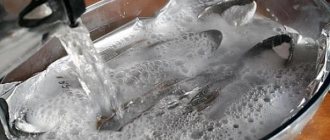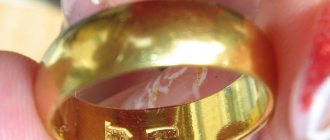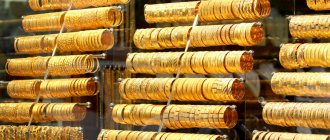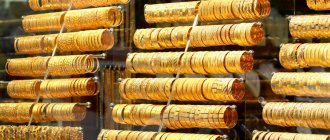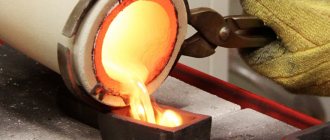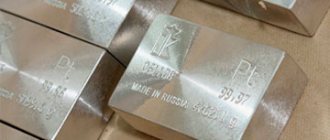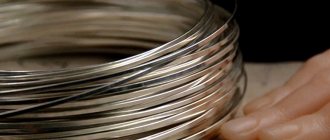The process of gold refining, that is, its purification, takes place in several stages: dissolution, filtration and precipitation of gold. And if you have gone through the two initial stages of precious metal purification, you will probably have a question about how to precipitate gold.
A gold object of a lower standard is dissolved in aqua regia, and then evaporated and filtered. The process is quite labor-intensive, but many people do it at home. But since it is not safe, do not forget about the safety rules.
And since at the end of the two stages gold is in dissolved form, in order to extract it from the solution, it is necessary to precipitate it. In chemical terms, this process is called reduction. Therefore, it is necessary to use substances that have reducing ability.
Gold precipitation
Aqua regia: history of the name, proportion of acids and chemical properties
The properties of Aqua Regia were described even before hydrochloric acid was discovered in the 14th century. The composition became widespread and got its name during the heyday of alchemy on the European continent. The German alchemist Albertus Magnus (of Cologne), who was the mentor of Thomas Aquinas, called it aqua secunda as a derivative of aqua prima, nitric acid.
Translated from Latin: “secondary vodka” and “primary vodka”.
Aqua regia is a very strong acid.
Representatives of the alchemical cohort began to call it royal when Cardinal Bonaventure, classified by Catholicism as the fathers of the church, established that a substance that combined two acids was capable of dissolving the “king of metals.” Previously, it was believed that the noble metal could not be changed by anything. The interaction of aqua regia and gold proved the opposite. In Russia, M.V. Lomonosov called the solution “royal vodka.”
The symbol of Aqua Regia, adopted by alchemists: ▽R. an inverted triangle is a sign of water.
Chemical products, when combined, interact and form a product composition that is highly active. This manifests itself in a strong odor with hints of chlorine and nitrogen dioxide. Nitrogen dioxide gas is yellow in color and resembles smoke of this tone.
At first, aqua regia has no color, but gradually acquires a yellow-orange hue, becoming a very strong oxidizing agent. If it is stored for some time, it gradually decomposes, releasing gaseous substances.
The rate of etching, that is, oxidation, or solubility level, of gold is about 10 µm/min. Other noble metals require heating to certain temperatures for the reaction to occur. This applies to rhodium and iridium. A metal such as silver has other properties. Dissolution in Aqua Regia does not occur; a layer of AgCl, a precious metal chloride, forms on the surface.
How to buy branded alcohol?
Since Tsarskaya belongs to the premium class of vodkas, it is of considerable interest to scammers. Therefore, in order not to buy burnt alcohol, know how not to make mistakes when purchasing.
Characteristic features of containers for Tsarskaya:
- On the label of each bottle is a portrait of Peter I, views of St. Petersburg and heraldic symbols.
- The label is transparent, always of high quality, and on its reverse side there are lines from The Bronze Horseman.
- Round, streamlined bottles with a narrow neck.
- The bottom is strongly concave and has convex inscriptions on it.
- On the side of the bottle there is a large embossed inscription “Premium”.
- Pay attention to the lid. There is an inscription in small print “Tsar Vodka”, and the protective film is branded.
- Having opened the bottle, you will understand that this is not a counterfeit if you see a dispenser with the inscription “Tsarskaya” in a circle.
- Bottles for Gold have a volume of 50, 350 and 750 ml; half-liter bottles are not available.
- For the Original, the volume is 50,350, 500, 700 and 1000 ml.
- All Czar's Original vodkas are available in 750 ml containers.
That is, if you see a Golden or original fruit in a half-liter container, this is a fake, Ladoga does not produce such.
Drink high-quality alcohol, know how to choose it wisely, and share the information you receive with your friends via social networks.
Read also: Feeling dizzy on an empty stomach
The indestructible Soviet Union—any citizen of the USSR before its collapse would have said so. Indeed, the alliance was indestructible, but it was destroyed, and traces remain to this day. Even a modern person cannot do without household devices (and not only household ones) that have a stamp on them > and we, radio amateurs, are no exception.
It's no secret that the Soviet state generously scattered its wealth into all industries, and electronics was one of them. Precious metals can be found in almost all domestic devices and radio components. All relay contacts of the “golden age” were either coated or made of pure silver and the Soviet engineer did not care that silver was not resistant to voltage and over time the contact would become covered with oxide, he only needed one thing - to obtain GOST approval, and if everything was according to GOST - the job is done and you can go home to sleep, because tomorrow you have to get up early, work...
In the Soviet Union, every person worked like this, there were no unemployed, there was no hunger, but there were lazy people who worked in several factories, but only as a diversion, in fact, from morning to evening they were busy with their “leftist affairs.”
One of these “leftist” cases was considered to be the dispossession of Soviet equipment. Before and after the collapse, even now, this business was and will be in fashion for many more years, until the last gilded detail disappears from the face of the earth, but in the USSR they were made in huge quantities, so that some will still have time to get rich in this business.
So, how to find and most importantly how to get gold from domestic equipment. At first, when I was publishing the article, I thought to talk about the components that contain gold, and it would have been so if not for the numerous letters from users of our websites and subscribers of my YouTube channel. People (even electronics engineers) are very concerned about the question of how to properly extract gold from domestic parts. I’ll tell you, but first I must warn you that the process is quite dangerous.
You need to know that not all components contain gold just lying around. Often people see a transistor with gold-plated legs and are happy that they found gold for free, but the terminals of the transistors are covered with a very, very thin layer of gold. Why was this done? Gold is the best conductor and does not oxidize - only for these reasons, and maybe the union had so much gold that it had nowhere to put it and decided to cover up all sorts of nasty things with it. You probably already want to know how to get gold? I won't torment you anymore. First we need to find gold-plated parts, and then prepare aqua regia.
What is the composition of aqua regia for dissolving gold and what reaction is possible at home
The exact weighted composition of the two acids is described as 65-68% by weight HNO3 and 32-36% HCl. The equation for the reaction that occurs when etching gold metal in a double acid solution:
Au + HNO3 + 4 HCl = HAuCl4 + NO + 2 H2O
Result: hydrogen tetrachloraurate (hydrochlorauric acid), nitric oxide, water.
From the composition of hydrogen tetrachloraurate, it is clear that the compound occurs between gold and hydrochloric acid. Nitric acid is present in the process as a catalyst with oxidizing properties.
Gold mining
The whole process takes place in three stages:
- Dissolving gold in aqua regia.
- Filtering the resulting solution.
- The process of gold precipitation after evaporation.
Safety rules when working with chemicals
A home chemical laboratory for refining processes similar to alchemical procedures requires maximum care and concentration.
Purification of gold using such complex reagents as highly active acids places serious demands on compliance with safety rules. The process lasts several hours, and the poisonous gases NOCl, Cl2, NO, NO2 evaporate along the way. This means that everything should take place either outdoors or in a room that is well ventilated, or has a powerful exhaust ventilation system.
It is necessary to protect your eyes with special goggles, your face with a respirator, and your body with appropriate protective clothing. No reagent should come into contact with body parts or face.
Mining gold from various parts , chips, SIM cards
The importance of meeting deadlines and proportions
In order for the reaction to be successful, the correct proportions must be maintained: 65-68% HNO3 to 32-35% HCl.
To obtain 1 g of gold, you will need about 5 g of reagent or 3.75 milliliters of hydrochloric acid. This proportion follows from the chemical formula for producing hydrogen tetrachloroaurate. When working with scrap precious metal to maintain proportions, before lowering it into an acid solution, you should run a magnet over it, which will remove particles of metals with ferromagnetic properties.
Further processing of raw materials takes place using chemical methods.
Pre-purification of gold in nitric acid
One of the methods for cleaning gold scrap or products containing precious metal is cleaning with nitric acid. It removes almost all accumulated impurities.
After this, the gold is dissolved using hydrochloric acid.
Chemical method of gold
The procedure for dissolving metal in acids and their gradual evaporation
The etching reaction mechanism is triggered by heating the mixture solution and adding nitric acid, which catalyzes the process. When all the metal has dissolved, it is no longer added, but proceeds to settling - the composition of this type is kept for about half an hour. Following this comes the filtration stage. For these purposes, filter paper of various qualities is useful. Iron sulfide – FeS – is often added to the filter.
Filtering the solution
Now it's time to filter the solution. For now, you can use a fairly coarse filter, and finer cleaning will happen later.
The resulting precipitate
It should be understood that aqua regia itself is a rather unstable substance: hydrochloric and nitric acids react with each other. Initially transparent, it soon turns orange-brownish due to nitrogen oxides, and then completely loses its oxidizing properties. The following reactions occur:
HNO3 + 3 HCl = 2Cl + NOCl + 2H2O
NOCl = NO + Cl
2NO + O2 = 2NO2
In addition, both acids simply evaporate. In this regard, it is advisable to keep the solution for about a day at this stage, as this will facilitate the further process of evaporation of nitric acid.
When evaporating, a small amount of sulfuric acid should be added to the solution, no more than 50 ml per liter. This will help precipitate residual amounts of lead and silver chloride (which, although slightly soluble, may be present in small quantities in the solution). In addition, the evaporation process will go faster.
Heating is done slowly and carefully. The solution is evaporated to the consistency of syrup (no more!). It is impossible to bring it to a boil, since in this case it cannot be ruled out that gold will precipitate in the form of a metallic precipitate already at this stage.
Then add hydrochloric acid to the solution to the original volume and evaporate again to a syrupy state. The process is repeated three times. After this, the liquid is diluted 2 times with cold water and left in the cold for a day. In this case, the remaining silver chloride should precipitate: it dissolves only in concentrated hydrochloric acid, and the higher the temperature, the better. Accordingly, as the concentration and temperature drop, AgCl precipitates. Now filtering is carried out “in full”: no turbidity should remain in the solution.
Section question - answer
How to make aqua regia to dissolve gold?
Expert opinion
Pribrezhny Gennady Valentinovich
Jeweler 6th category
The composition in which two acids act is obtained by combining them in a certain percentage ratio: 65-67% HNO3 and 33-35% HCl. When converted to pure substances, one to two.
How to precipitate gold from aqua regia at home?
Expert opinion
Grishanov Mikhail Petrovich
Jeweler, director of the Grishanov and Co. workshop
If you carry out the etching reaction at home, several chemical reagents are applicable and relatively safe:
- inkstone; FeSO4 is added with an aqueous solution, proportion 1 to 2;
- oxalic acid can be successfully used in secondary precipitation;
- sodium pyrosulfite is suitable for secondary precipitation, added in pure form, in an aqueous solution, requires caution: if something is done wrong, harmful gaseous substances will be released;
- Hydrogen peroxide must have a high concentration for the process to proceed.
- Hydrazine is a strong solvent, not very suitable for home use; if used, it must be added in small drops, since if not done carefully, an explosion may occur.
Mined gold after deposition
Gold precipitation
Precipitation of gold from solution can be done using various reagents (hydrogen peroxide, oxalic acid, sodium sulfite or pyrosulfite), but usually ferrous sulfate is used - ferrous sulfate FeSO4. The following reaction occurs:
HAuCl4 + 3FeSO4 = Fe2(SO4)3 + FeCl3 + HCl + Au.
Iron sulfate must be taken at least 13 g per 1 g of the intended final product. It is enough to dilute iron sulfate with warm water with a small amount of hydrochloric acid and add it to the existing solution. The liquid should immediately become cloudy. If this does not happen, and especially if hissing begins, it means that the nitric acid has not been completely evaporated. In this case, you can repeat the evaporation process, or you can simply add a little more ferrous sulfate (it is good for its ability to easily and safely neutralize excess nitric acid).
After a day, the deposition process is completed. If, when adding grains of iron sulfate to the solution, no cloud of turbidity appears, then the isolation of gold is complete. If cloudiness appears, you need to add more ferrous sulfate and wait.
Lastly, after draining the entire solution, the resulting gold precipitate should be washed with hydrochloric acid to remove iron salts, and then with an ammonia solution (ammonia) to remove residual copper.
This way you can get gold of 999 purity and even higher. From a jewelry point of view, such a metal will correspond to the highest standard - 24 carats.
Source
